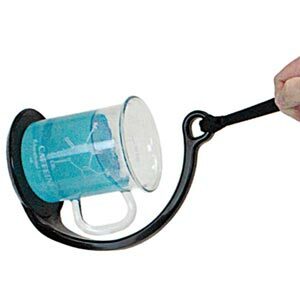May 28, 2015
 by: Priscilla Robinson
by: Priscilla Robinson
The bright days of spring can be a great kick off opportunity for seed planting and other fun activities that will keep students engaged in purposeful learning right up to the end of the school year. Educational Innovations has plenty of hands-on products that fit right in with springtime scientific activities. It is not too late to germinate your students’ curiosity with planting seeds, feeding your local flock of feathered friends or playing with shadows. Get up and enjoy the warming weather!
Read the rest of this entry »
 3 Comments |
3 Comments |  College level, Earth Science, Elementary level, experiments, High School level, Middle School level | Tagged: DIY, Educational Innovations, fun experiments, hands-on activity, homeschool, light, parent friendly, PBL, phenomenon based learning, phenomenon-based science, science, science fair project |
College level, Earth Science, Elementary level, experiments, High School level, Middle School level | Tagged: DIY, Educational Innovations, fun experiments, hands-on activity, homeschool, light, parent friendly, PBL, phenomenon based learning, phenomenon-based science, science, science fair project |  Permalink
Permalink
 Posted by Donna Giachetti
Posted by Donna Giachetti
April 28, 2015

The awesome thing about teaching a lesson on electricity is that students of all ages can get a “charge” from figuring out how to make a circuit work. And that’s just the beginning!
Teaching electricity opens the door to many related topics—alternative energy sources, lightning, static electricity and magnetism, to name a few.
We’ve put together a Super! Wow! Neat!® assortment of teacher-tested electricity discussion starters, research ideas, worksheets and more. Scroll down for ideas. Let us know how they work in your classroom!
Read the rest of this entry »
 Leave a Comment » |
Leave a Comment » |  electricity, Elementary level, energy, experiments, High School level, Middle School level | Tagged: Educational Innovations, electricity, energy, experiments, fun experiments, hands-on activity, homeschool, parent friendly, PBL, phenomenon based learning, phenomenon-based science, science |
electricity, Elementary level, energy, experiments, High School level, Middle School level | Tagged: Educational Innovations, electricity, energy, experiments, fun experiments, hands-on activity, homeschool, parent friendly, PBL, phenomenon based learning, phenomenon-based science, science |  Permalink
Permalink
 Posted by Donna Giachetti
Posted by Donna Giachetti
April 8, 2015
 By: Donna Giachetti
By: Donna Giachetti
A Lesson on Electricity… with Elmo
Even babies understand the difference between ON and OFF. After mastering peek-a-boo, turning a switch on and off is one of a toddler’s favorite games. What will happen if I press here? Where did that light come from? Who made that noise? Something nearly always happens when a button is pushed, and it leaves children wanting to know more. At least that’s how it went in my house. My son wasn’t satisfied squeezing Tickle Me Elmo’s belly to hear the little guy giggle. He soon figured out how to switch Elmo on-off-on-off so rapidly that the poor fuzzball appeared to have a bad case of the hiccups.
Read the rest of this entry »
 Leave a Comment » |
Leave a Comment » |  College level, electricity, Elementary level, energy, experiments, High School level, Middle School level | Tagged: Educational Innovations, electricity, experiments, hands-on activity, homeschool, parent friendly, PBL, phenomenon based learning, phenomenon-based science, science, variables |
College level, electricity, Elementary level, energy, experiments, High School level, Middle School level | Tagged: Educational Innovations, electricity, experiments, hands-on activity, homeschool, parent friendly, PBL, phenomenon based learning, phenomenon-based science, science, variables |  Permalink
Permalink
 Posted by Donna Giachetti
Posted by Donna Giachetti
February 9, 2015
 by: Evan Jones
by: Evan Jones
How the SpillNot works:
When you hold a cup of juice while walking, the juice tends to spill because the cup accelerates forward (ax, FIG.1, green arrow) and backward (-ax) with each step. The juice tips in response to that acceleration, and may spill over the rim of the cup.
 The Spill Not automatically tips the cup so that its top stays parallel to the juice surface (FIG.2). For example, if the juice surface tips to 30 deg, but the cup stays horizontal, the juice could spill. But if the cup also tips to 30 deg, we get no spill! Note that there are only 2 forces on each portion m of juice…the weight mg down, and the buoyancy force Fb of the juice pushing at a right angle to the surface. These two forces result in a horizontal accelerating force ma (in red). We see from FIG.1 that
The Spill Not automatically tips the cup so that its top stays parallel to the juice surface (FIG.2). For example, if the juice surface tips to 30 deg, but the cup stays horizontal, the juice could spill. But if the cup also tips to 30 deg, we get no spill! Note that there are only 2 forces on each portion m of juice…the weight mg down, and the buoyancy force Fb of the juice pushing at a right angle to the surface. These two forces result in a horizontal accelerating force ma (in red). We see from FIG.1 that
Read the rest of this entry »
 2 Comments |
2 Comments |  College level, experiments, High School level, Physics | Tagged: acceleration, centripetal force, hands-on activity, homeschool, parent friendly, PBL, pendulum, phenomenon based learning, phenomenon-based science, Physics, science, Spill not |
College level, experiments, High School level, Physics | Tagged: acceleration, centripetal force, hands-on activity, homeschool, parent friendly, PBL, pendulum, phenomenon based learning, phenomenon-based science, Physics, science, Spill not |  Permalink
Permalink
 Posted by Tami O'Connor
Posted by Tami O'Connor
January 29, 2015
 by: Tami O’Connor
by: Tami O’Connor
As an elementary and middle school teacher and Girl Scout leader, I had a bag of tricks that I dug into frequently… One of my favorites was the gyrocopter. I always kept a template in my files and when teaching about air, friction, forces symmetry or flight, out it came. It was simple enough for kindergarten students to build, yet complex enough to hold the attention of eighth graders as we discussed principles of drag, the characteristics of flight or even just isolating variables in an experiment.
Nearly 400 years before the invention of the helicopter, Leonardo da Vinci sketched out a machine designed to compress air in order to obtain flight. When Igor Sikorsky designed the first successful helicopter in the late 1930’s, da Vinci’s spinning wing was his inspiration.
Today, you can easily build gyrocopters with your students to explore different designs and variables.
How Does a Gyrocopter Work?
Read the rest of this entry »
 2 Comments |
2 Comments |  Elementary level, experiments, Middle School level, Physics | Tagged: flight, helicopters, homeschool, parent friendly, PBL, phenomenon based learning, phenomenon-based science, science, science lesson, variables |
Elementary level, experiments, Middle School level, Physics | Tagged: flight, helicopters, homeschool, parent friendly, PBL, phenomenon based learning, phenomenon-based science, science, science lesson, variables |  Permalink
Permalink
 Posted by Tami O'Connor
Posted by Tami O'Connor
 by: Priscilla Robinson
by: Priscilla Robinson


 Posted by Donna Giachetti
Posted by Donna Giachetti 
 By: Donna Giachetti
By: Donna Giachetti by: Evan Jones
by: Evan Jones
 by: Tami O’Connor
by: Tami O’Connor